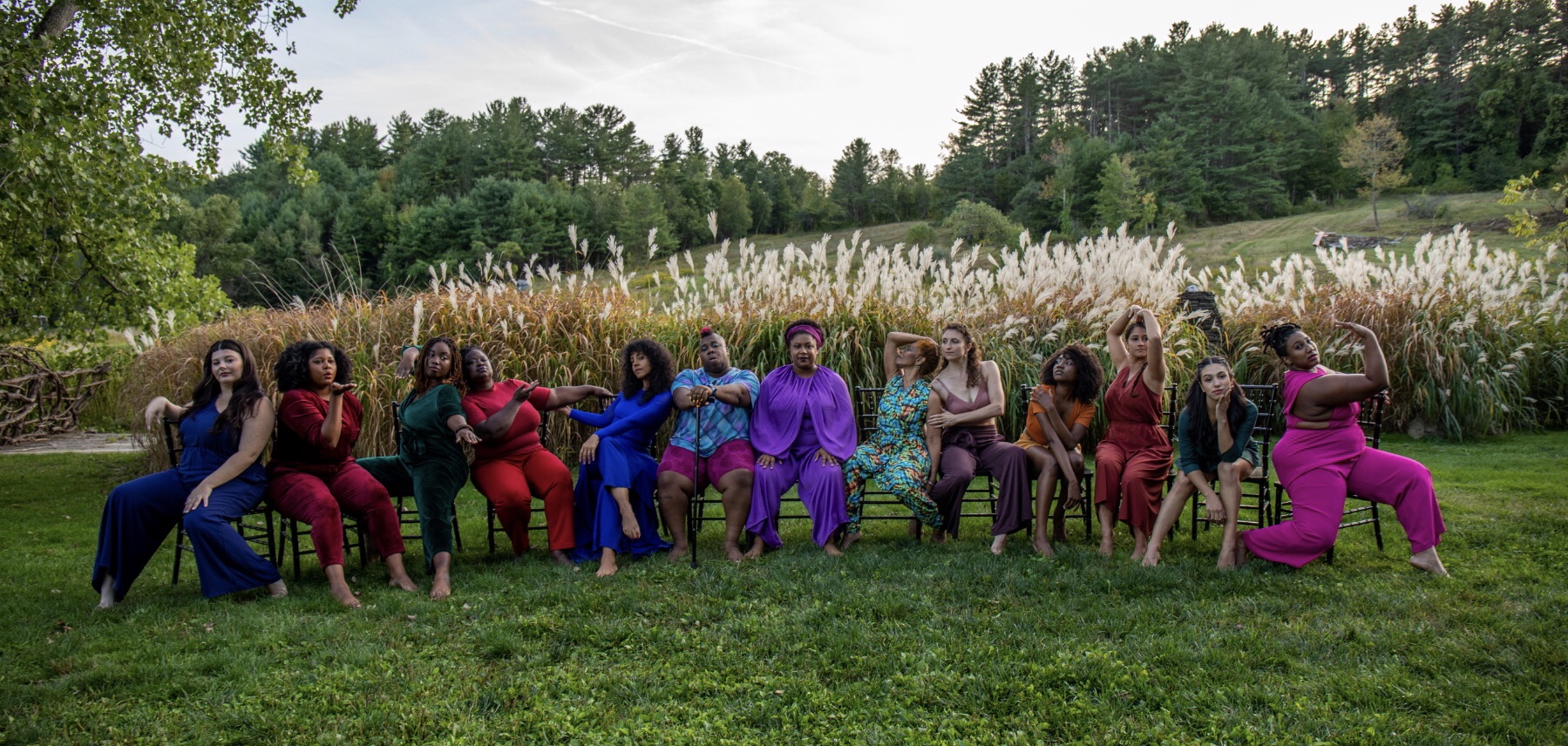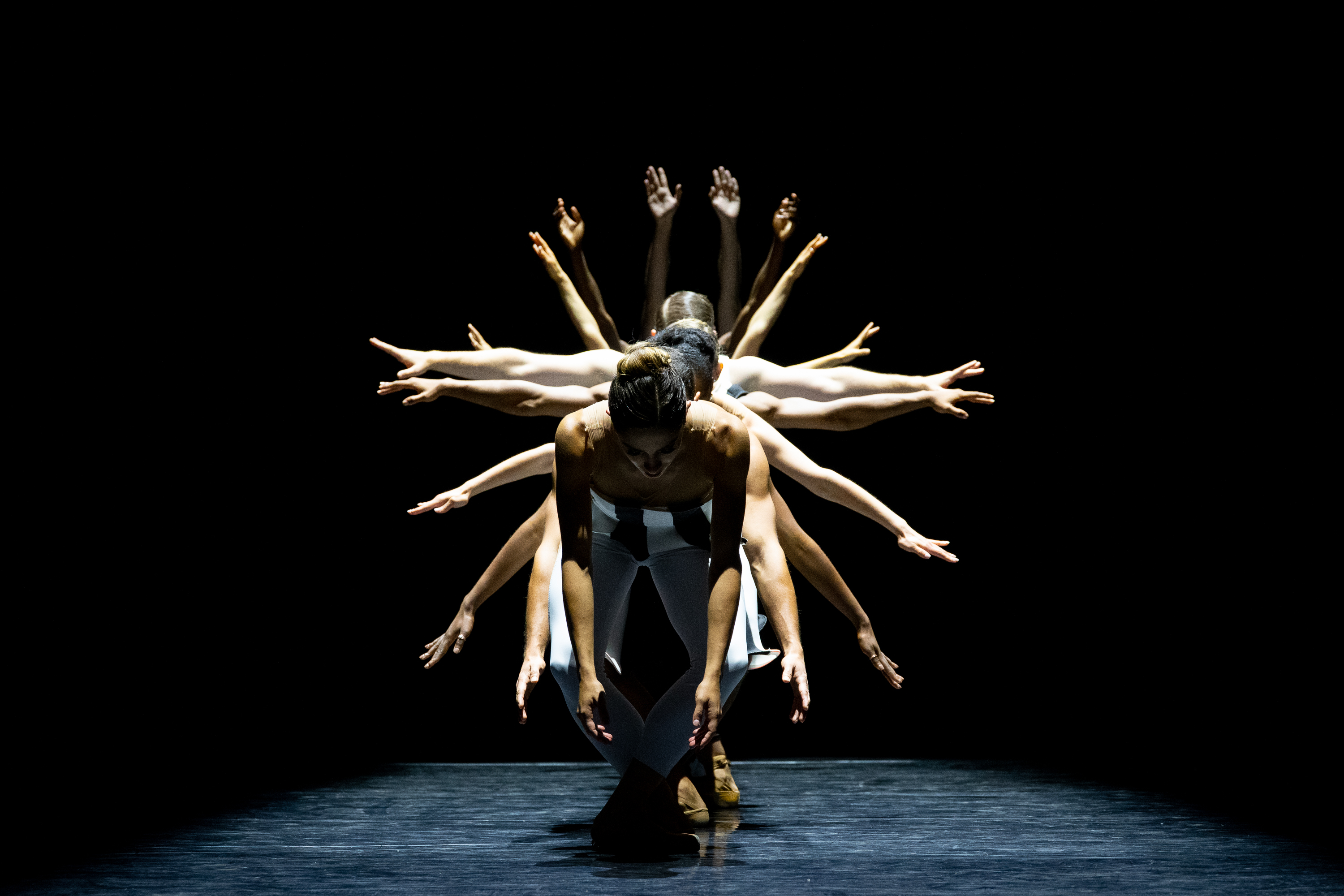A GENTLY VISCERAL “STRIPE TEASE” BY CHRIS SCHLICHTING
By Luella Christopher, Ph.D.
American Dance Institute
Rockville, Md.
October 2-3, 2015
Life-affirming choreography can be elusive in the Millennium. Chaos and conflict predominate to such an extent that audiences leave the theater feeling like deflated balloons. Not so with Minneapolis-based Chris Schlichting, whose choreography in “Stripe Tease” is fully integrated with punk-style music and visual art. It’s so luminescent and uplifting that one yearns for more of Schlichting’s playbook or perhaps referral to older literary and dance works such as the iconic Rudyard Kipling or Julie Taymor.
Watching “Stripe Tease” amounts to gazing upon a painting with the moving parts contributing to an abstract whole. No one detail is so jarring that it detracts from that picture. A backdrop of vertical stripes created by Jennifer Davis in brilliant fluorescent colors like silver, coral, lime and fuschia that eventually grows to the height of the stage. It also compliments the costuming for the six-person ensemble by Schlichting himself of all-black tunic tops and biker shorts or long pants. Neither the stripes nor the costumes compete with each other. An onstage rock band is eventually added to the mix. These three major components deliver a visual and auditory feast. Lighting design by Joe Levasseur further amplifies the unity of the whole, transiting from a singular funnel directed to a pair at the beginning to bright overheads that occasionally expose the seated audience.
As for the choreography itself, continuous motion pervades even when some of the dancers mount the aisles and strike poses only inches away from theater patrons. Solos take place deftly within the shifting ensembles. Pairs and other combinations emerge, then dissipate. Gazing upon one another is shunned in favor of interactions that occur mostly without touching.
A synchronicity marks these combinations, especially in Schlichting’s use of arms and upper bodies. Contortions are frequently softened while arms as well as wrists and fingers curl, wrap, thrust, dig, splay, chop, and swish in animal-like moves. We could be trekking through a jungle, even a rainforest at the point where the choreography evokes underwater currents or waves colliding with a stretch of land. Images of sprinting tigers and one growling head of a tiger mounted on side walls and behind the rock band reinforce Schlichting’s ultimately fanciful journey.
Subtle counterpoint to the fluidity of the overall choreography is achieved by one dancer in particular (Dustin Maxwell) who prances around the perimeter. Intricate arm motions are particularly riveting in the figure of one petite female dancer (Parenna Lim). Dolo McComb, Laura Selle Virtucio, Max Wirsing and Tristan Koepke comprise the ensemble’s remaining exceptionally strong dancers. Each one is different from the others in bearing and physique, yet no dissonance undermines the integrity of the whole.
Copyright © 2015 by Luella Christopher




